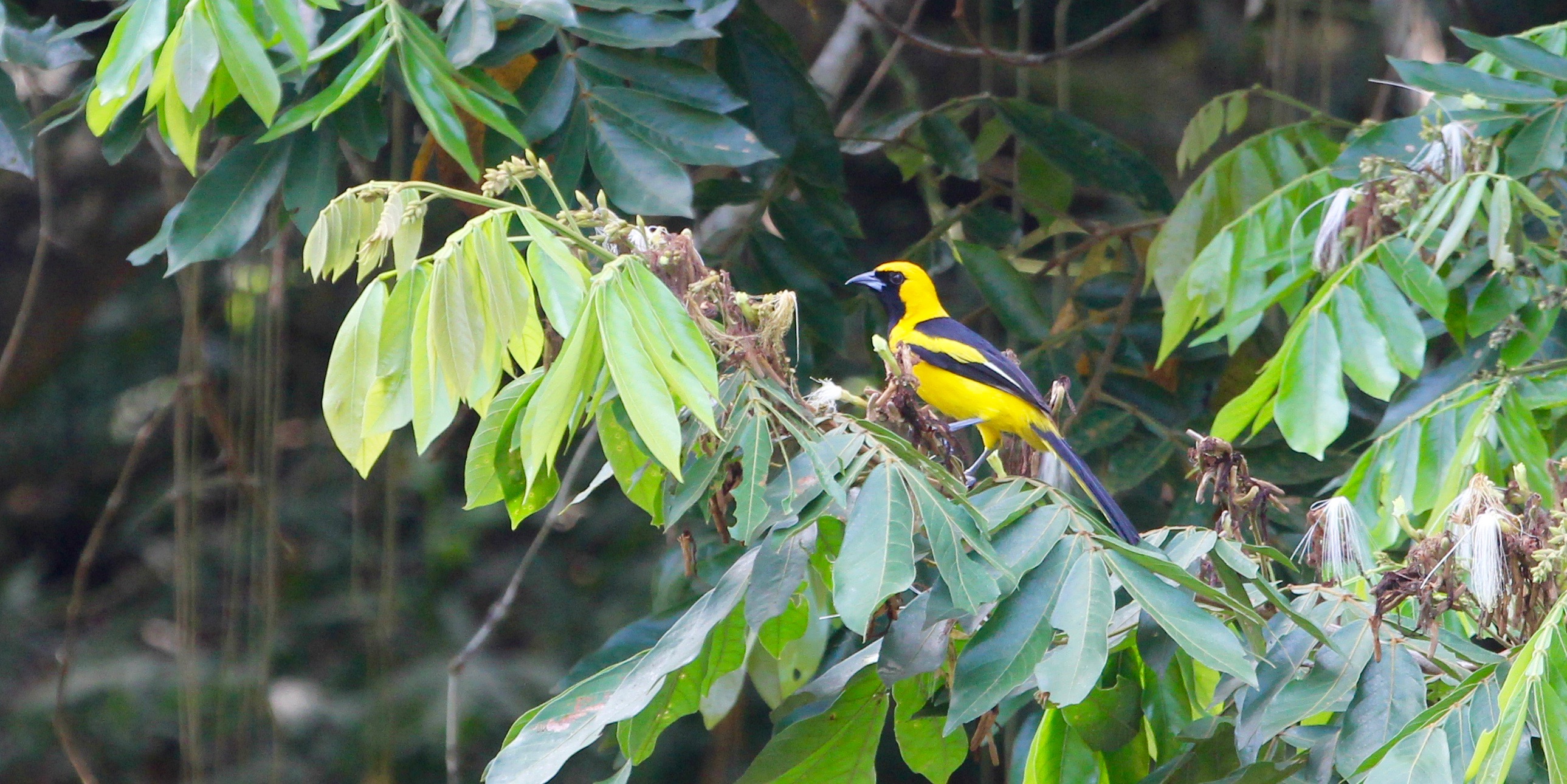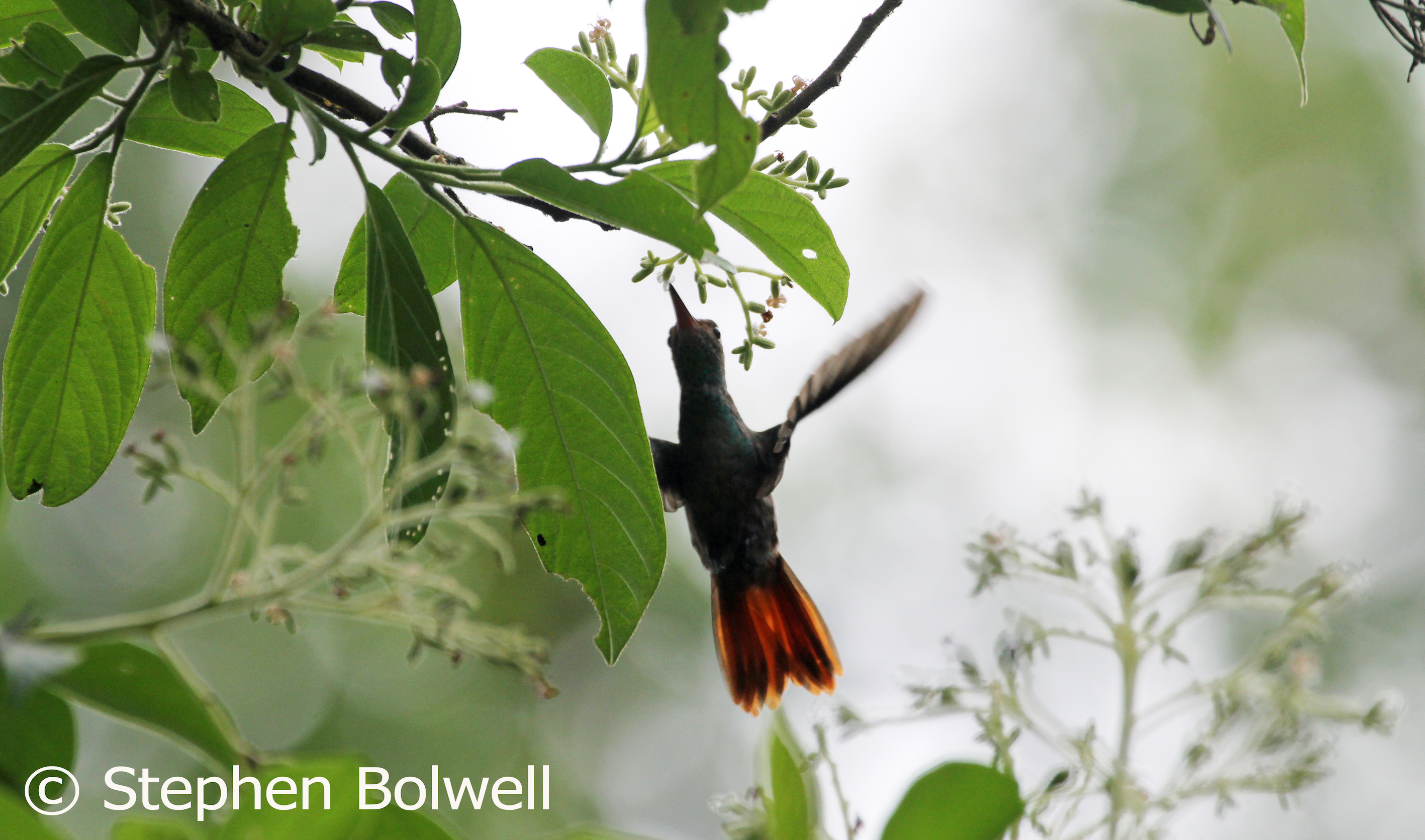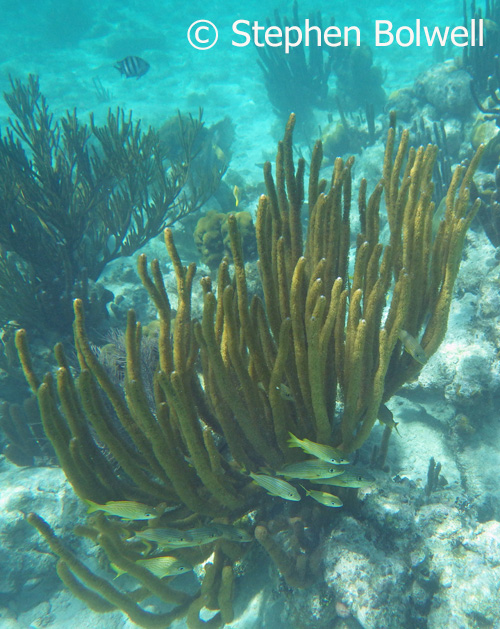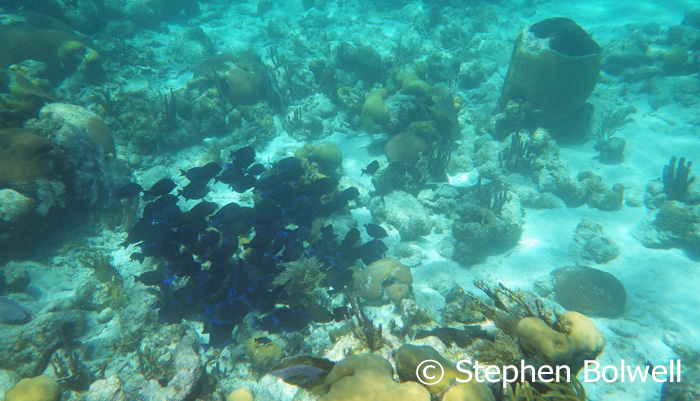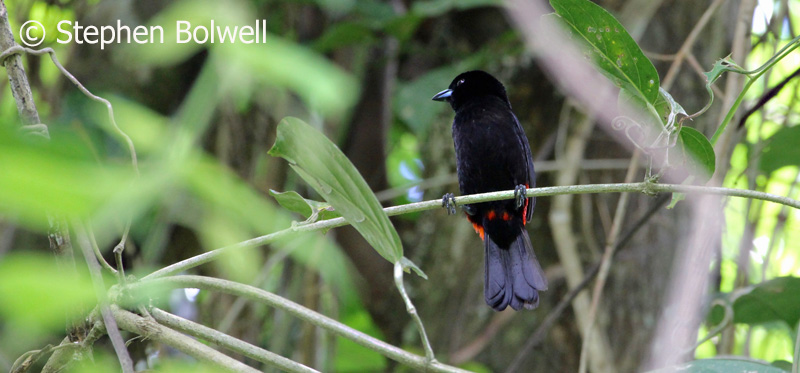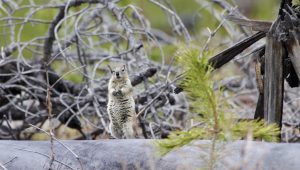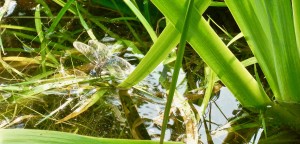I was recently on holiday in Belize with my wife Jen and daughter Alice, and as usual had nothing to do with selecting either our destination or how we would get there. Jen decided to travel United Airways because they had recently dragged a customer off of a flight to worldwide condemnation. She thought we might get a better deal in the wake of the bad publicity… and we did, along with great treatment from cabin staff, evidently trying to make amends. Our cabin attendant, said that the day before he had told passengers over the intercom, to raise their arms in the air, explaining that this would make it easier to drag them off. And to his surprise… still has a job!
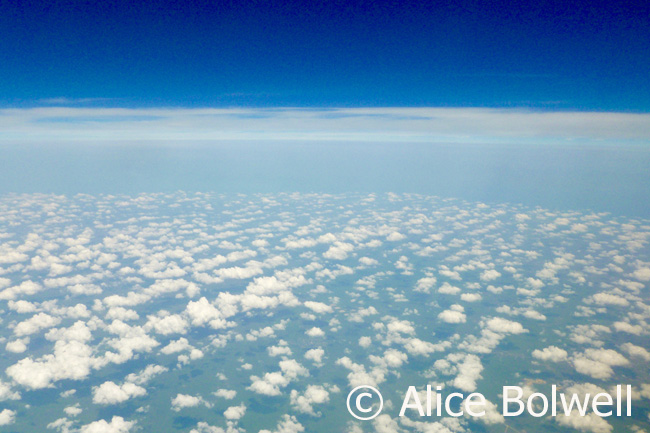
It was Alice who chose our destination, one she thought might suit us all: she wanted a variety of adrenalin pumping adventures; her mother needed a relaxing beach holiday; and I hoped to quietly observe and photograph wildlife. With all of this in mind, she chose Hopkins – a village destination that runs along the coast, and this turned out to be a good choice.
Belize International Airport is about a third of the way down the country and Hopkins is another third of the way further south. The initial drive from the airport took about two and a half hours, this after three flights across North America, the first of which started late the previous evening in Vancouver. But at least we had moved from the low 50s to the low 90s ºF which was a bonus as far as I was concerned.
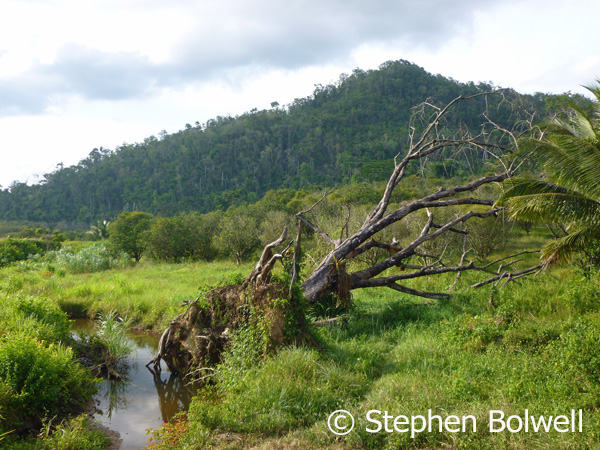
We didn’t want to be hanging around Belize City for too long because parts of it were clearly unsafe. But reading the advice sheet from the car hire company seemed likely to notch everything one step closer to hysteria. Belize sounded like a war zone… the car doors must be kept locked; no hitchhikers; no stopping anywhere other than public areas and no travelling at night unless you could guarantee stops were made in well lit areas… and of course, there could be absolutely no breaking down. Not so easy when your four-wheel drive smells of petrol and the pot holes in some of the roads just can’t wait to rip your tyres off… For us, ‘No breaking down’ seemed to be hopeful in the extreme.

The truth is rather more prosaic – the most dangerous thing about driving across Belize is the speed humps you encounter when entering any place of habitation. The first will give you a pounding because you won’t have met one quite like it before, and if the suspension and rear axle hold out, you certainly won’t make that mistake again – they need to be taken unbelievably slowly. There really isn’t a lot else to worry about because people are mostly friendly, especially those living in the small towns and communities that we pass through.
Drivers are often said to be unpredictable, but this isn’t the case either. What is more certain, is that when the road runs out and you find yourself on a dirt track, the ride is going to get rather bumpy.
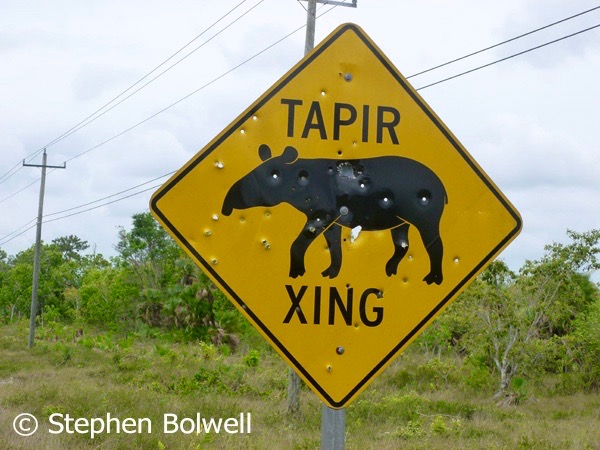
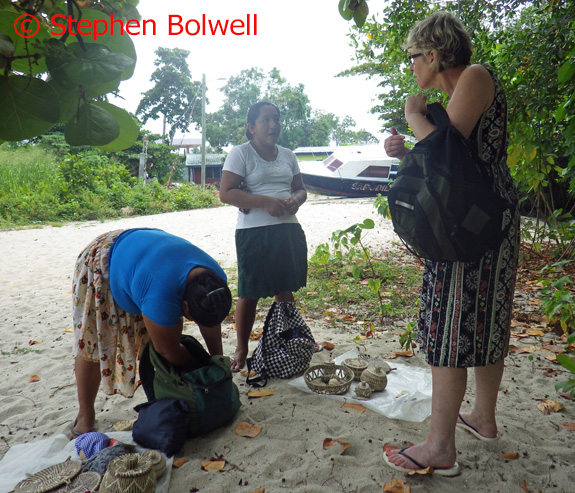
For most people a holiday abroad involves staying in a resort that minimises contact with local people – everything you need is on site and tours are usually organised with the efficiency of a special needs outing.
We prefer to drive ourselves wherever we go and avoid the noisy idiots that are drawn to the sun as certainly as a red giant eats its planets; by doing this, we also throw off the constraints of other people’s time; and get to spread our spending money amongst the locals rather than ploughing our budget into multinational tourist concerns.
Into the Green:
Our second day was a rest day for Jen, she hung out close by the beach while Alice and I took a short drive to The Coxcomb Basin Wildlife Sanctuary – established in 1886 it now runs to 120,000 acres of moist tropical forest and is most famous for preserving jaguars – there are said to be up to 80 breeding pairs living in the park, maybe some are moving through because that sounds like a lot of big cats for the area and as jaguars are mostly solitary, to describe them as pairs might also be confusing. After a bumpy six mile ride from the ticket office, along a rough old track we pass a sign that says jaguar crossing, which confirms we are at least going in the right direction, and soon after arrive at park headquarters.
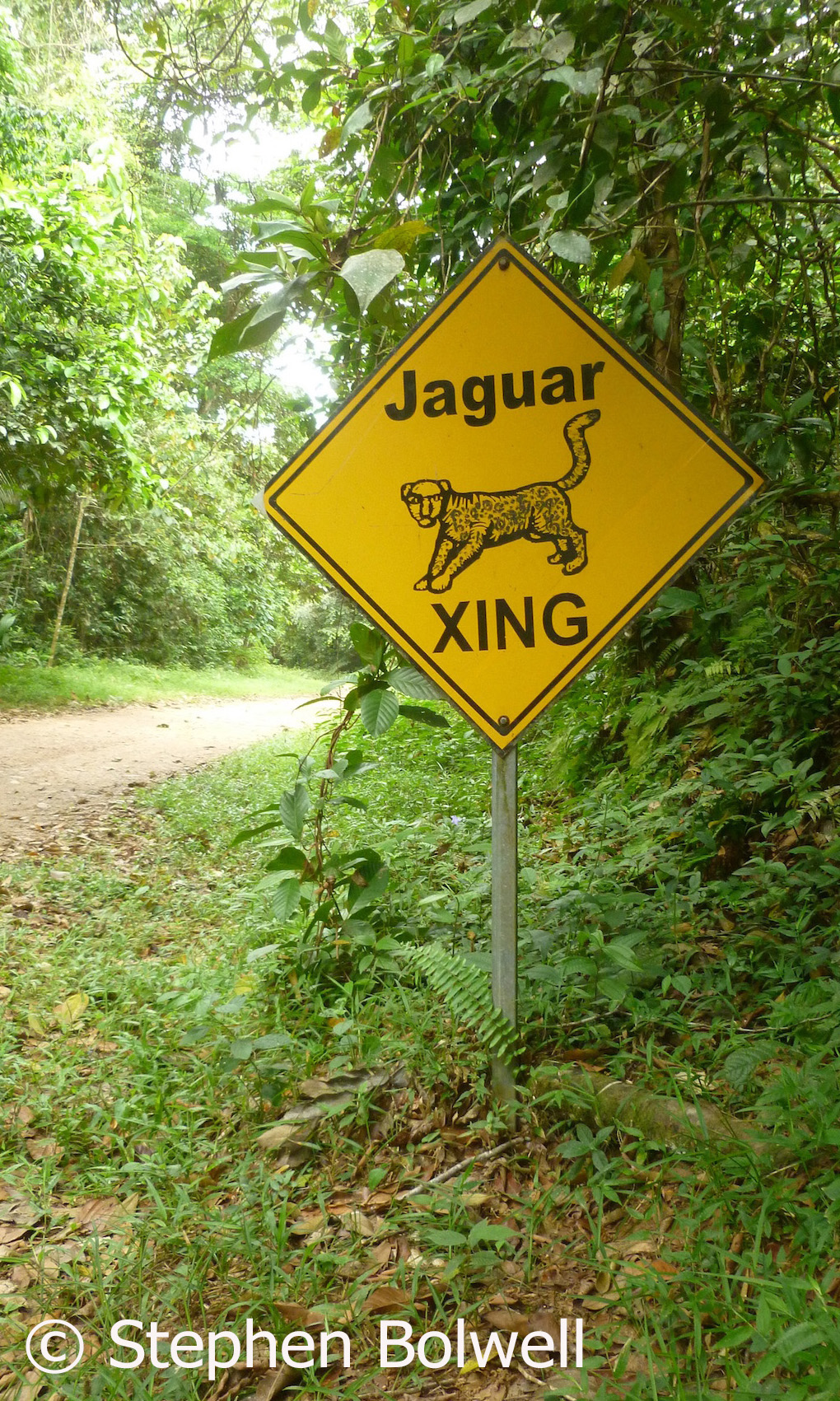
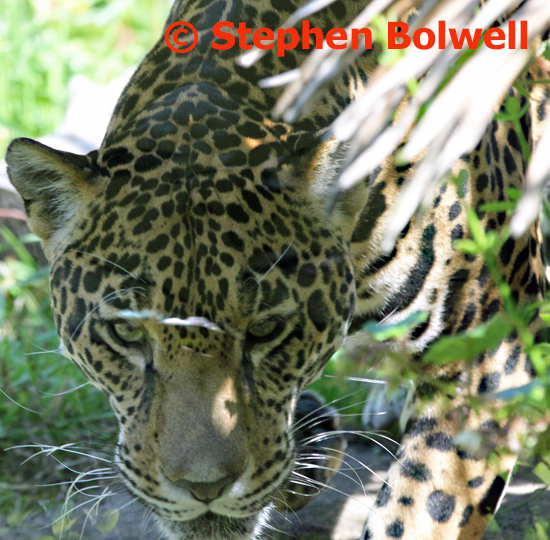
O.K., so we didn’t see any jaguars – the last sighting occurred in mid-April 2017. Rather surprisingly, most are glimpsed during mid-afternoon, usually along river courses, probably because this is the time when tourists are likely to be around. The park opens at 7.30 a.m. and closes at 4.30 p.m. – not really the best period to see jaguars on the wander. There are organised night tours, but otherwise the park closes long before it gets dark, which is the time when jaguars are most active.
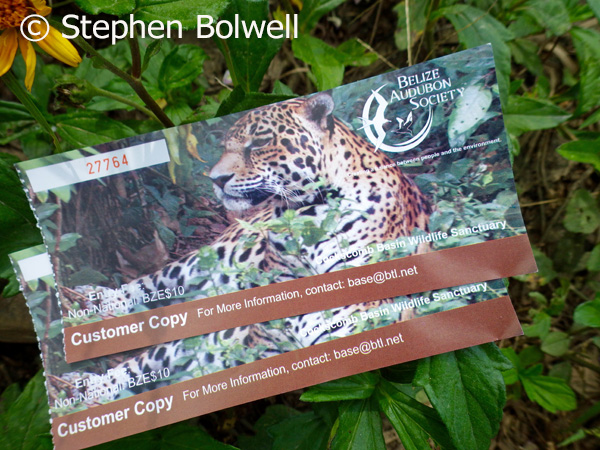
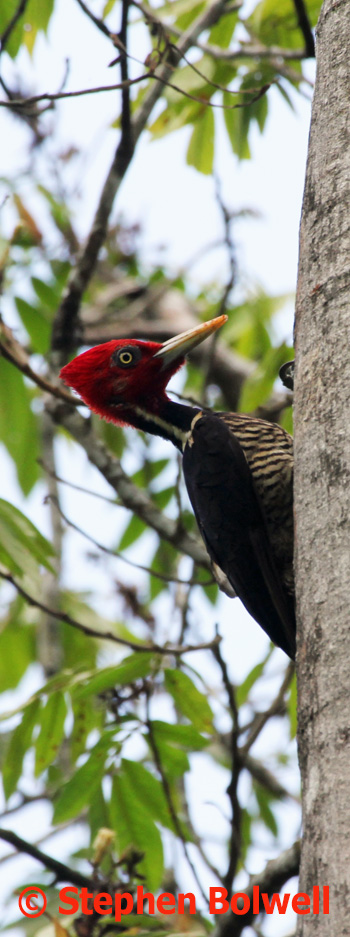
What we did see, were a great many smaller animals, particularly birds – there are some 300 species in the park and when you stop comparing them with large impressive cats, they are both interesting and often colourful. We saw a wide variety of them soon after our 8.00 a.m. arrival as we walked down the River Path to South Stann Creek, and at one point three different species of woodpecker were playing hide and seek around an old dead tree that towered above the secondary forest.
Close by the river we discovered a horse balls tree (Stemmadenia donnell-smithii), its boughs noticeably drooping with large fruits that were beginning to split, and several toucans flew out before I had a chance to photograph them.
Trees in flower or carrying ripe fruit are exactly what I look for when working tropical forest because this is a habitat that doesn’t reveal its precious jewels easily. Like the toucans, most animals are quickly away into the greenery – there are few occasions when wildlife will hang around to be photographed, especially anything that can fly and you have to take your chances when they occur.
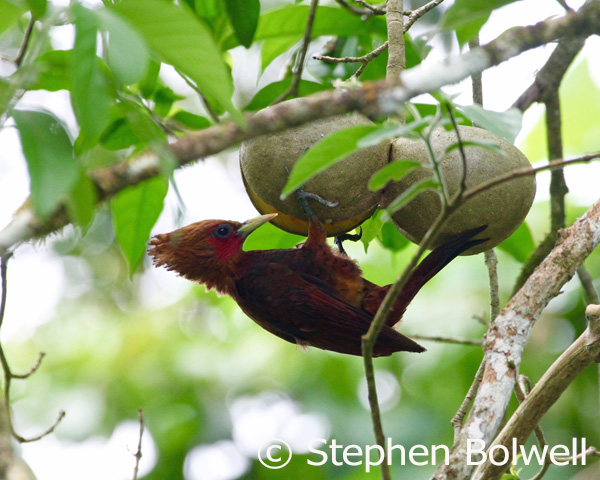
With a horse balls tree in fruit and another tree in flower the situation proves attractive to a great many birds; and we are standing close by the river which opens up a whole new set of opportunities for wildlife.
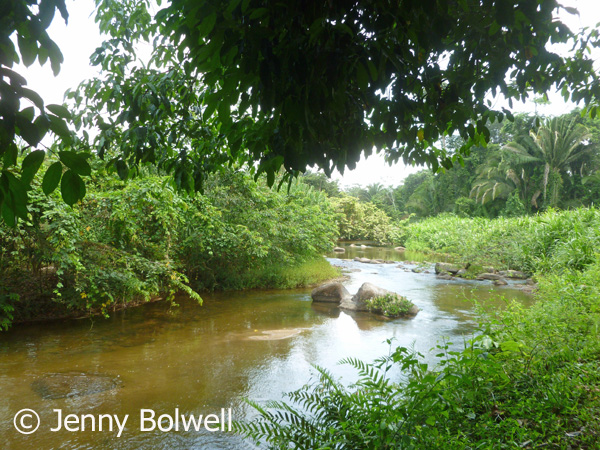
 My attention is drawn by a flash of yellow – an oriole has arrived to feed on flowers on trees along the opposite bank of the river; initially I think the bird is feeding on the attractive drooping frond like seeds, but closer observation tells a different story, it is feeding on flowers hidden beneath – just like the bird, I grab what I can. This food gathering goes on for longer than I could have hoped for and then a second individual joins the first. Unfortunately, the birds are only just in range of my lens. I don’t see the birds on any of my other visits, but I do get the opportunity to see at least five other species feeding on the fruits that I am mostly covering. And on an adjoining tree hummingbirds are sipping at flowers. 70% of my time in the park is spent working this location because the presence of attractive flowers and fruits suggest this to be my best option.
My attention is drawn by a flash of yellow – an oriole has arrived to feed on flowers on trees along the opposite bank of the river; initially I think the bird is feeding on the attractive drooping frond like seeds, but closer observation tells a different story, it is feeding on flowers hidden beneath – just like the bird, I grab what I can. This food gathering goes on for longer than I could have hoped for and then a second individual joins the first. Unfortunately, the birds are only just in range of my lens. I don’t see the birds on any of my other visits, but I do get the opportunity to see at least five other species feeding on the fruits that I am mostly covering. And on an adjoining tree hummingbirds are sipping at flowers. 70% of my time in the park is spent working this location because the presence of attractive flowers and fruits suggest this to be my best option.
After a couple of hours, grabbing whatever I can Alice and I walk on to a nearby waterfall – it’s a bit of a hike when you are low on water and the temperature is pushing 100℉ along with high humidity. Physically it becomes a struggle, even Alice, who is very fit, appears exhausted and I look as if I’ve taken a shower in my clothes.
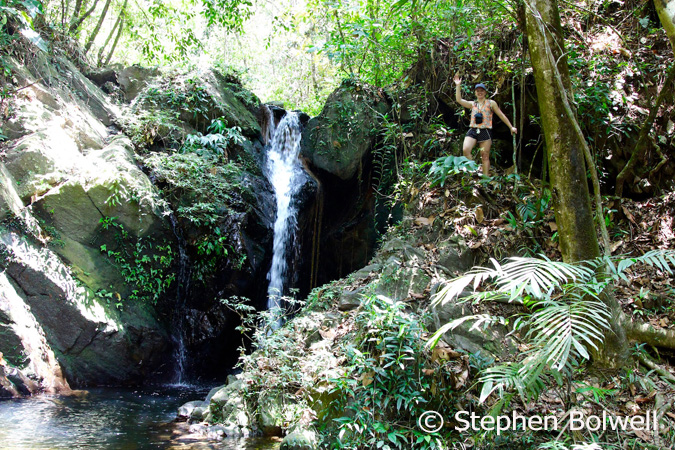
Early afternoon, we walk back to park headquarters to buy large bottles of water straight out of the fridge – these are extraordinarily revitalising in a way that warm water from your carry bottle just isn’t, especially when you have reached the point when you think you are about to fall down and die. A few minutes after the cold drink has hit our insides, we feel suddenly better and pretty soon we’re considering where to go next.
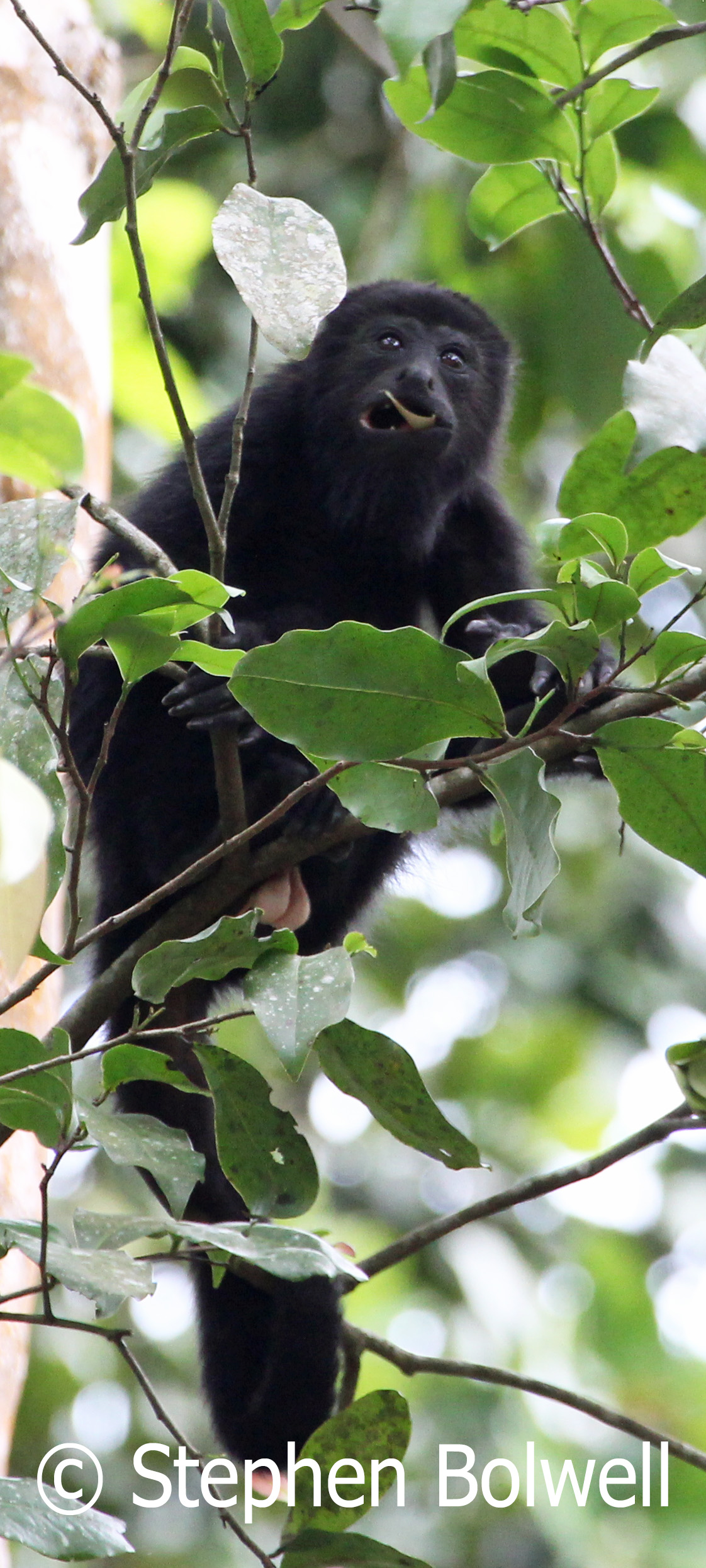 I cover up in the forest and suffer only a few insect bites. Alice wears repellant but picks up more bites than I do – a single trip into this forest is enough for her, but I make two more visits, one with Jen and another by myself. On this our first day in forest, Alice and I set off back to the car around mid-afternoon; it has become very hot and there is little activity. As we are coming along a trail we pass between two troops of howler monkeys at the time they start howling at one another – there is nothing remotely dangerous about the situation, but, if you haven’t heard them before, these wailing banshees will frighten the life out of you.
I cover up in the forest and suffer only a few insect bites. Alice wears repellant but picks up more bites than I do – a single trip into this forest is enough for her, but I make two more visits, one with Jen and another by myself. On this our first day in forest, Alice and I set off back to the car around mid-afternoon; it has become very hot and there is little activity. As we are coming along a trail we pass between two troops of howler monkeys at the time they start howling at one another – there is nothing remotely dangerous about the situation, but, if you haven’t heard them before, these wailing banshees will frighten the life out of you.
Into the Blue:
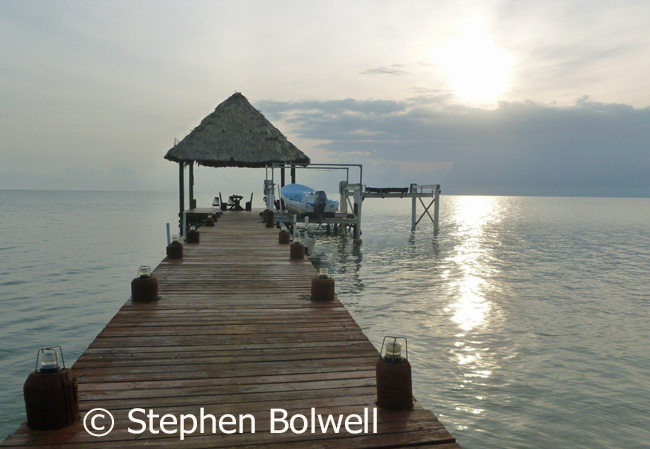
With only a 30 metre walk from our rooms to the dock pick up point, there were no travel time pressures at the start of our snorkelling day out.
Getting there.
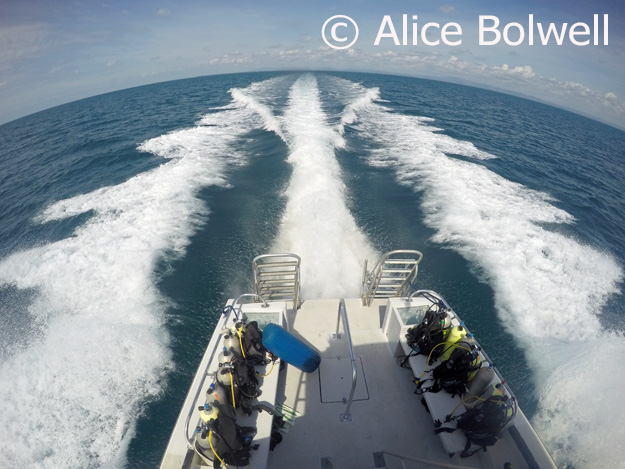
We sped across the water for nearly an hour to our first site – an out to sea location where the water was deeper than ideal for me to take pictures, but at least provided the opportunity to see a variety of good sized fish swimming beneath us. The reef is more colourful than expected with little sign of bleaching, but sadly there are fewer fish than we had hoped for. The coral was varied with some impressively delicate forms that you just don’t see on reefs that have been trashed by fishing, or degraded by climate change.
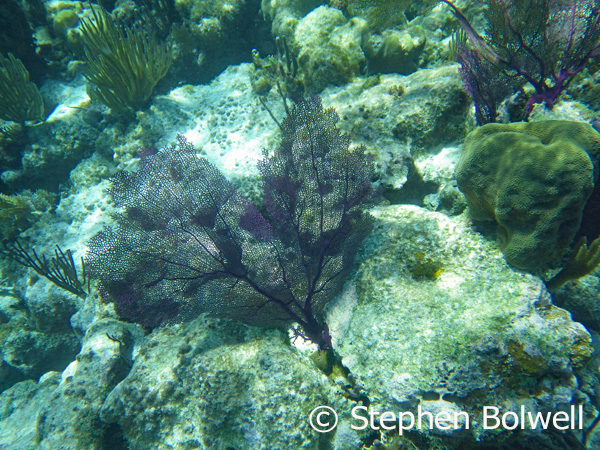
Both Alice and Jen had the better of me because once in the water they both turn into mermaids, I on the other hand become a fishing weight and have to devote quite a bit of my time to just not drowning. This is especially the case today as the boat drops us on a reef well out to sea and then goes off to busy itself dumping divers into deeper water; you just have to get your head around the idea that you are a long way out with no land or boat in sight, this can be unnerving and if you can’t get past that, you probably shouldn’t go into the water.
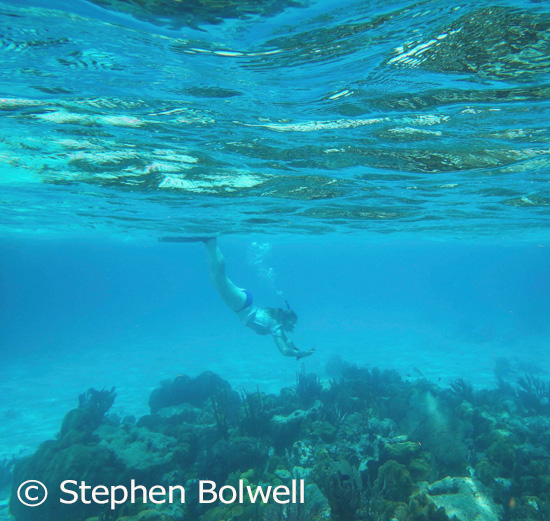
The Belize Barrier Reef is part of a reef system that extends for more than 550 miles and it is well worth making the effort to see it – this is the most impressive off shore reef in the world after the Great Barrier Reef of western Australia.
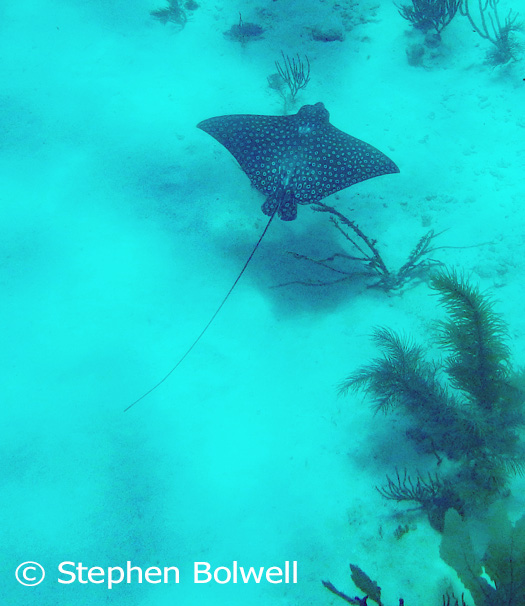
Our companions on the morning snorkel didn’t want to do more than half and hour in the water, citing age as the primary consideration, which rather put me out. If I am faced with a potential drowning event later in the swim, I like to at least get a good snorkel in before it starts to happen.
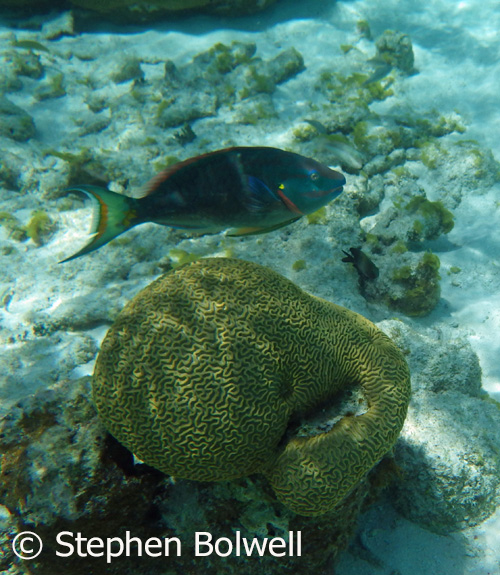 There was a strong current and I have difficulty keeping up with the others – they appear to move against the flow more easily than I do; this holds Alice back because she feels obliged to stay close. She tells me I lay too flat in the water – this, to a degree, because I’m concerned about flippering the coral. While I struggle to simply change direction my wife is out of sight, she might as well be swimming in another ocean for all we see of her. I have no real fear in the water which is probably down to poor judgement. I must by now have spent a great many hours snorkelling and have tried it both with and without floatation support and have no idea why I remain so rubbish at it.
There was a strong current and I have difficulty keeping up with the others – they appear to move against the flow more easily than I do; this holds Alice back because she feels obliged to stay close. She tells me I lay too flat in the water – this, to a degree, because I’m concerned about flippering the coral. While I struggle to simply change direction my wife is out of sight, she might as well be swimming in another ocean for all we see of her. I have no real fear in the water which is probably down to poor judgement. I must by now have spent a great many hours snorkelling and have tried it both with and without floatation support and have no idea why I remain so rubbish at it.
In the afternoon our aged, but possibly not as old as me, ‘too many pancakes for breakfast’ Texan friends decide not to take another turn in the sea and are unceremoniously dumped on a nearby island, leaving Jen, Alice and I to make up the full party. The problem now is our guide; I thought he was there to intervene if I had problems in the water, but his role apparently, is to dive down and poke at things with a long pointy stick for no good reason I can think of. As soon are we are back at the surface, I tell him not to do this and I keep it brief because I don’t have a lot of spare air for an unnecessary chat. All I have seen in my viewfinder so far is the end of the guide’s pole and fish moving rapidly away. For all the effort I have to put in to line up a picture the whole thing becomes immensely frustrating. After he quite reasonably interprets my comment as a complaint he leaves me alone, which is great, because drown or no drown – I see far more without him.
The Desert… but not deserted Island.
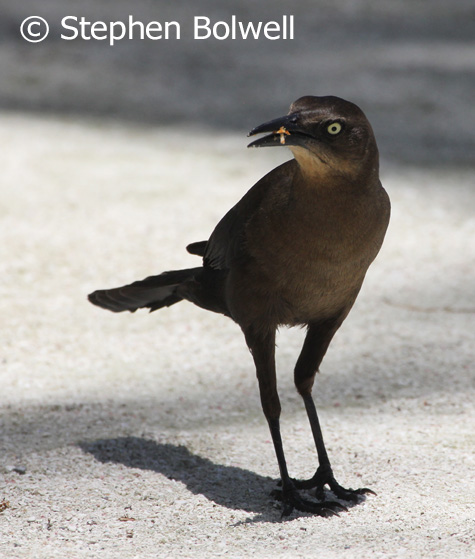 Lunch is taken on a desert island, which sounds more exciting than it actually is – essentially this is a compacted sand tourist hang out. Our meal is chicken and rice and I don’t mean to sound ungrateful, but there is only so much of this I can comfortably eat, nevertheless great-tailed grackles come and join us because they aren’t so fussy.
Lunch is taken on a desert island, which sounds more exciting than it actually is – essentially this is a compacted sand tourist hang out. Our meal is chicken and rice and I don’t mean to sound ungrateful, but there is only so much of this I can comfortably eat, nevertheless great-tailed grackles come and join us because they aren’t so fussy.
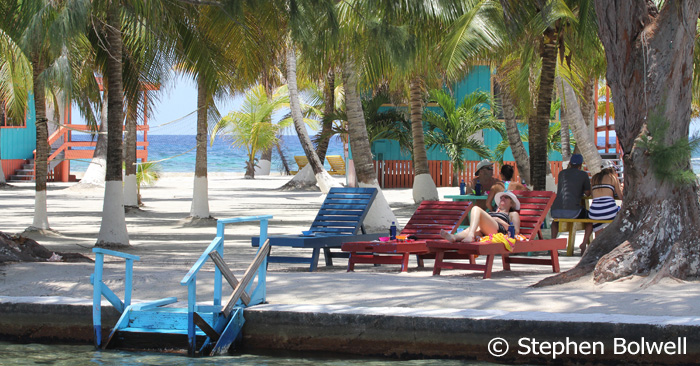
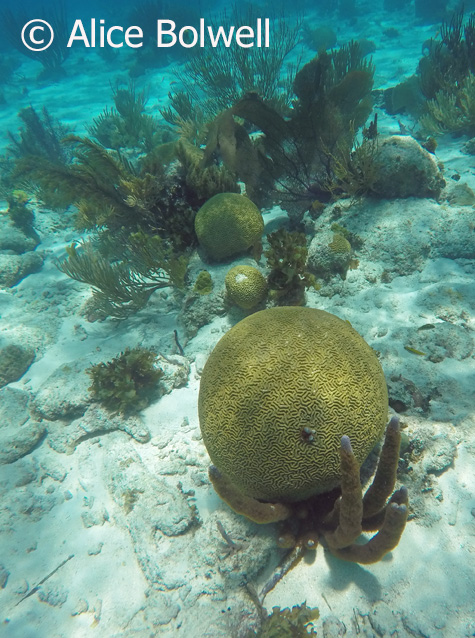
In the afternoon we snorkel closer to shore; in shallower water we are only a foot or two above the corals and I have to work hard to avoid touching them. This is however an ideal depth for taking pictures and after an hour or so I am feeling very comfortable, and no longer thinking about how ill equipped I am to be in the water. If you can get past your land-based limitations, watching fish becomes hypnotic; with a greater density than air, water appears to slow down time for everything that slides through it.
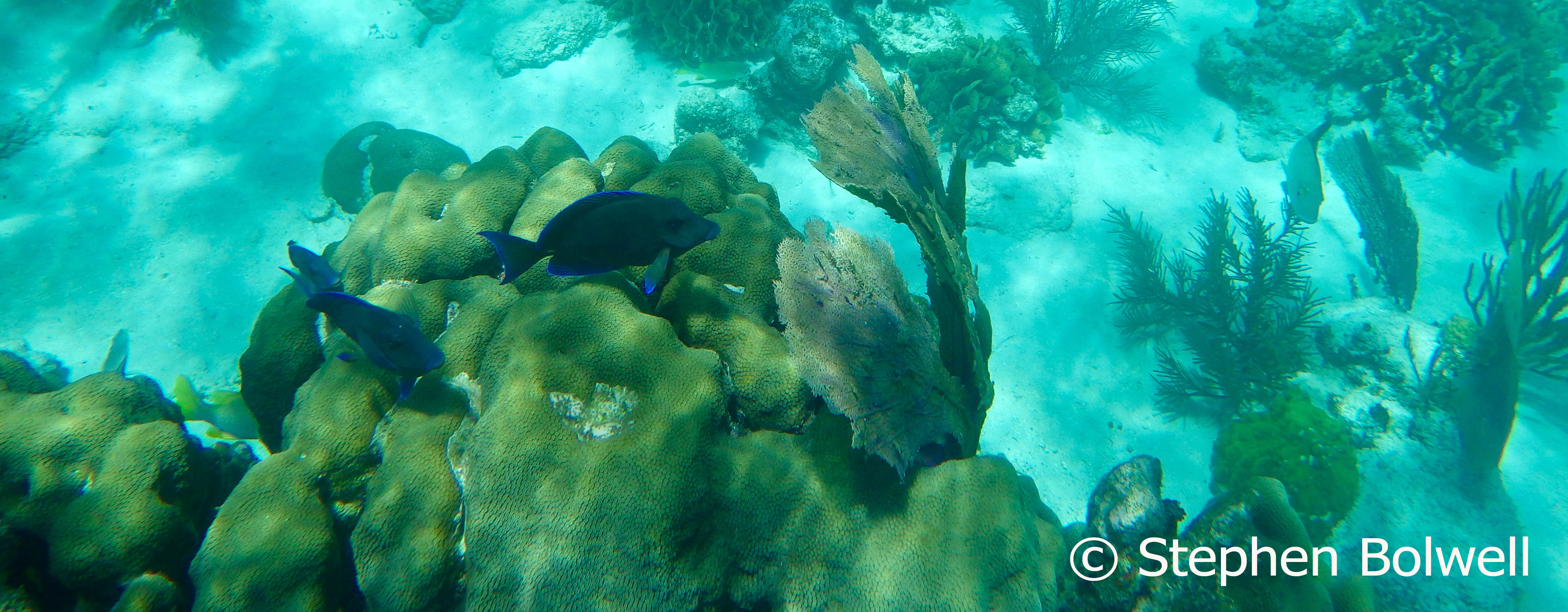
Eventually we make our way into a sandy shallows flowing with seagrass – we are approaching the island beach that had been the dumping ground for our Texan party. When we first started out on our afternoon snorkel the island had seemed so very far away, and without a current working against me, I was surprised by how much I had seen and how far I had snorkelled without feeling exhausted.
Causes for Concern: land and sea.
Our first few days had provided me with a great many photo opportunities. My subjects weren’t in any way ground breaking, but you’d need to be very jaded to be unimpressed by the natural wonders that Belize has to offer.
There are however two areas of concern. The first is that all of the lowland forests I entered were generally degraded. The Coxcomb Wildlife Sanctuary site had, until 1988, been a logging concern – and this is not an unusual story: once trees have been felled, logging companies will sometimes return the land back to nature, and as wonderful as this is, it is a bit like putting the cart before the horse, or is it shutting the stable door after the horse has bolted? Or maybe shooting the horse and then shutting the stable door… Certainy one of those.
We should all be pleased to get things back to something like natural, but rarely is the original diversity achieved if there is no surrounding source to keep the eco-system intact. The occasions when natural environments are wrecked by humans, and then given over to conservation are numerous… until of course somebody finds a mineral present that we really can’t do without, or maybe the trees need selectively cutting again. Commercial expedience nearly always wins out, trumping the need for absolute conservation.
 I wasn’t surprised that I couldn’t find large tracts of primary lowland forest – and have to accept that most people have no idea what that is, they are just pleased to be in a bit of forest where wildlife survives at all.
I wasn’t surprised that I couldn’t find large tracts of primary lowland forest – and have to accept that most people have no idea what that is, they are just pleased to be in a bit of forest where wildlife survives at all.
Secondary forest usually contains far fewer species than undisturbed forest, but hardly anybody notices and it is ironic, that for an opportunistic wildlife photographer, secondary forest offers certain advantages: it brings the birdlife that does manage to survive down from the upper reaches to a lower level of forest, essentially because there is nowhere else to go; creatures that no matter how colourful, we’d probably seldom see if they were living in the upper reaches of virgin forest. The draw back of secondary forest is that the grow back is often tightly packed and difficult to see through as young trees compete for available space and resources. Nevertheless, along trails where there is light, most of us will have a fair chance of seeing and photographing wildlife and with the right lenses achieve results.
The second concern is the obvious development of tourism along much of the coastline. This must throw into question how sea life in general, and the offshore reef in particular, will fair if development goes ahead at the rate that is currently planned. Our seas an oceans have so far absorbed a lot of our waste, but there are limits, and eventually we may destroy the very environments that the tourists have come to see.
 In the second part of this story I take a more careful look at what is happening to natural forests and the outlook is not entirely positive. We should all be concerned, because any loss of biodiversity simply to provide short term commercial gain inevitably has far reaching consequences for all of us; and killing the goose that lays the golden egg is far from beneficial to local people who have managed, with low population levels, to live in harmony with their surroundings for thousands of years; something we have so far failed to do with our ‘advanced’ high density industrial lifestyles. It is as well to remember that there are presently no self-sufficient major cities, which throws into question what the term ‘civilised society’ really means.
In the second part of this story I take a more careful look at what is happening to natural forests and the outlook is not entirely positive. We should all be concerned, because any loss of biodiversity simply to provide short term commercial gain inevitably has far reaching consequences for all of us; and killing the goose that lays the golden egg is far from beneficial to local people who have managed, with low population levels, to live in harmony with their surroundings for thousands of years; something we have so far failed to do with our ‘advanced’ high density industrial lifestyles. It is as well to remember that there are presently no self-sufficient major cities, which throws into question what the term ‘civilised society’ really means.
With thanks to Jen and Alice for their pictures.
Next time ‘Belize: The Down Side – Deforestation’.
